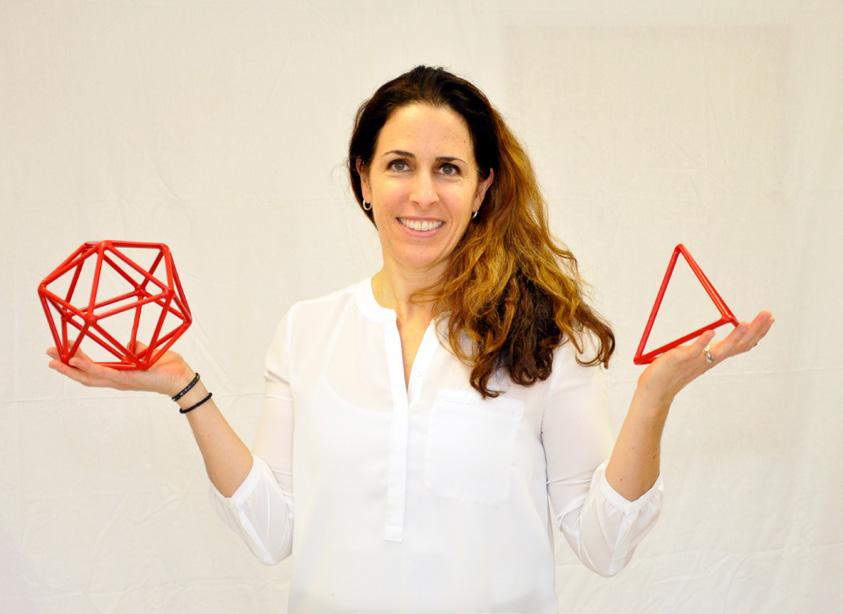
2 minute read
Office Hours: Carolyn Luna
Photo courtesy of Carolyn Luna
Carolyn Luna serves as program director for the San Antonio Virtual and Interactive Geometry Lab.
Before she was a mathematics lecturer at UTSA, Carolyn Luna was a high school math teacher and, before that, an environmental science consultant. “I find engaging in mathematics so rewarding,” says Luna. “I’ll get stuck in problems and that can be frustrating, but at the same time, I just find it so satisfying and worthwhile. Going through the intricacies of a math problem from start to finish is such a good feeling. And I think I’m actually quite slow at math because I like to think about the reasoning behind each step. I’m OK with that, and I want my students to understand you don’t have to be fast at calculations to be good at math; it’s all right to make mistakes and take your time.” When she is not teaching at UTSA, Luna enjoys leading lessons for visiting school groups at the San Antonio Virtual and Interactive Geometry Lab (SAVIG), where she serves as program director.
Launched in 2004 by UTSA’s Dr. Sandy Norman and Dr. Stephen Juhasz, SAVIG is housed in the Institute of Texan Cultures (ITC). The lab is run by the Math Department and facilitated by both UTSA faculty and volunteer instructors. School groups, from kindergarten to 12th grade, participate in culturally responsive mathematics lessons that incorporate the museum’s Texan artifacts and antique buildings, such as the historic one-room schoolhouse.
Luna estimates that the lab instructs about 20 different groups of students each year at the ITC, not including the off-site school visits that SAVIG conducts for schools unable to take a field trip. In addition, many children participate in SAVIG-led mathematics activities during the museum’s free Family Days. With the help of enthusiastic volunteers and creative programming, the lab hopes to show kids that math is fun. “I think a lot of children do not see the application of mathematics,” Luna explains. “They think math is just done inside their school classroom on worksheets. They don’t see the connection between what they’re learning at school to what they experience in the outside world, and how interesting and creative and social mathematics can be. Kids often don’t see the joy involved. Sometimes kids are surprised when they’re having fun working in the lab.” Luna believes that SAVIG is a valuable resource for elementary through high school students and future math educators alike. “With the SAVIG lab, UTSA has a bridge to the community so we actually know and have experience working with those who we are serving,” she says.
Unfortunately, the coronavirus pandemic temporarily stymied face-to-face instruction at the ITC and prohibited off-site visits. In fall 2020, SAVIG plans to offer virtual instruction for school groups. “Taking our lessons online will help us engage even more students in creative, meaningful, and culturally responsive mathematics,” says Luna.
Find more Office Hours features on our website: utsa.edu/sciences.










